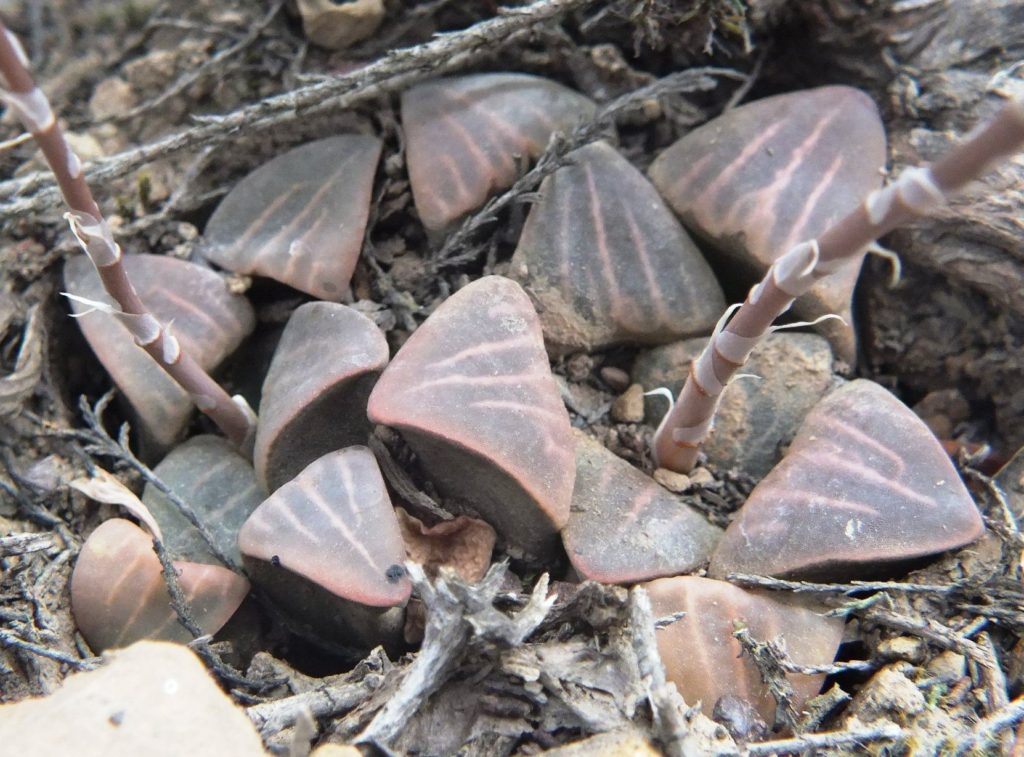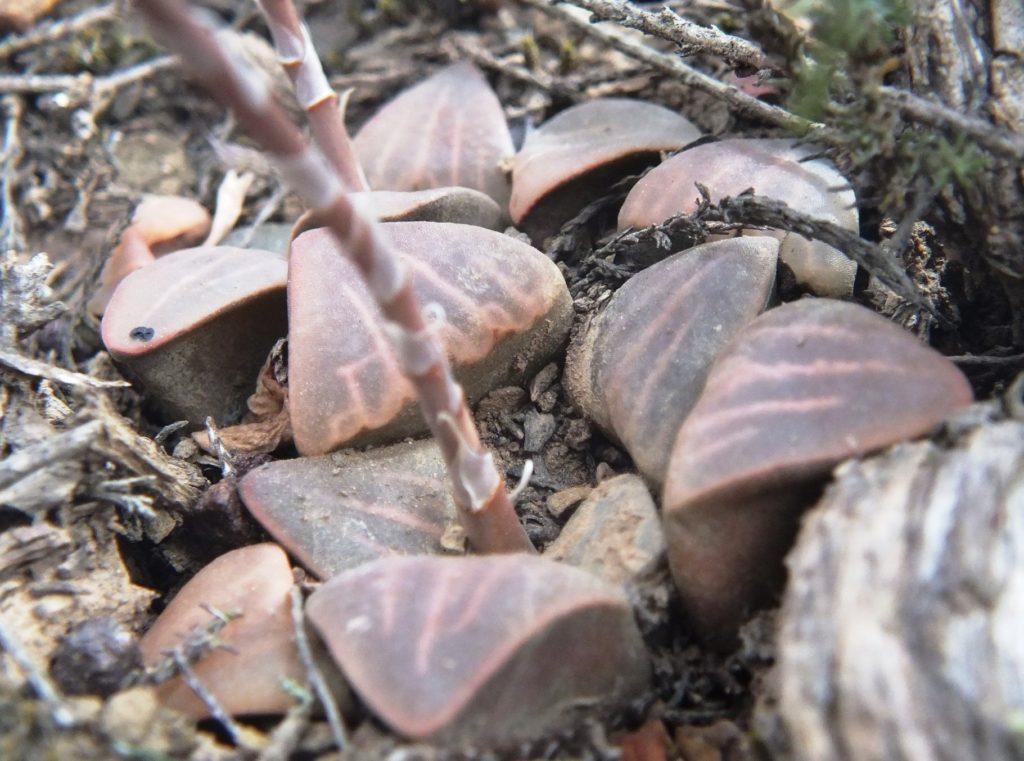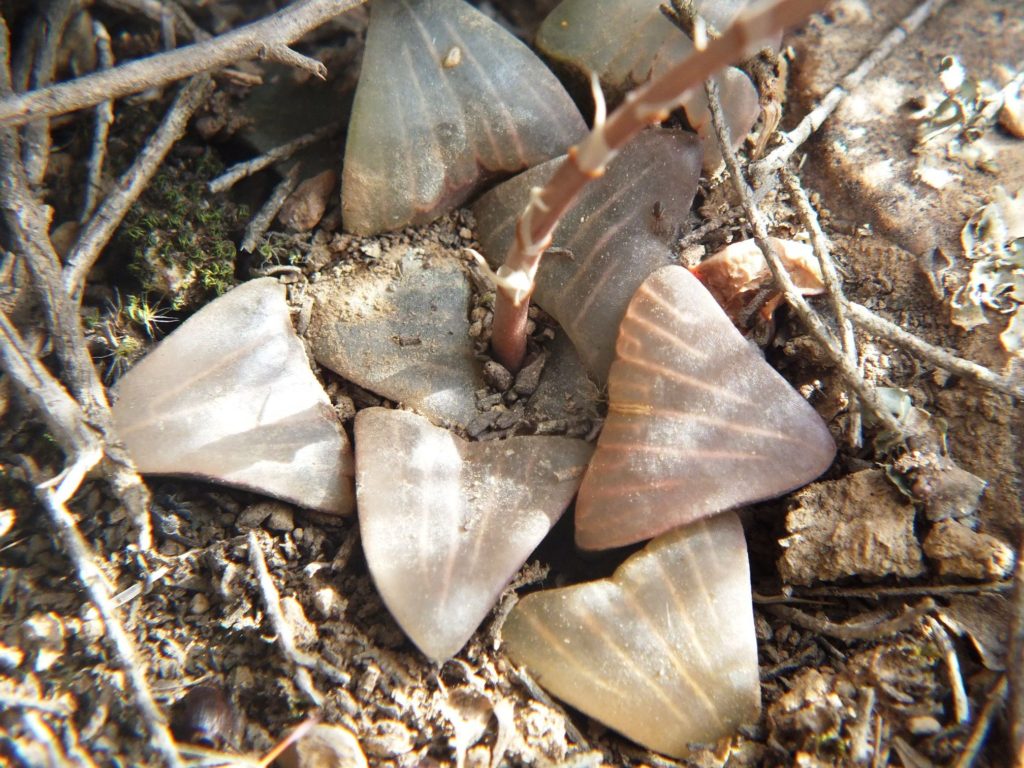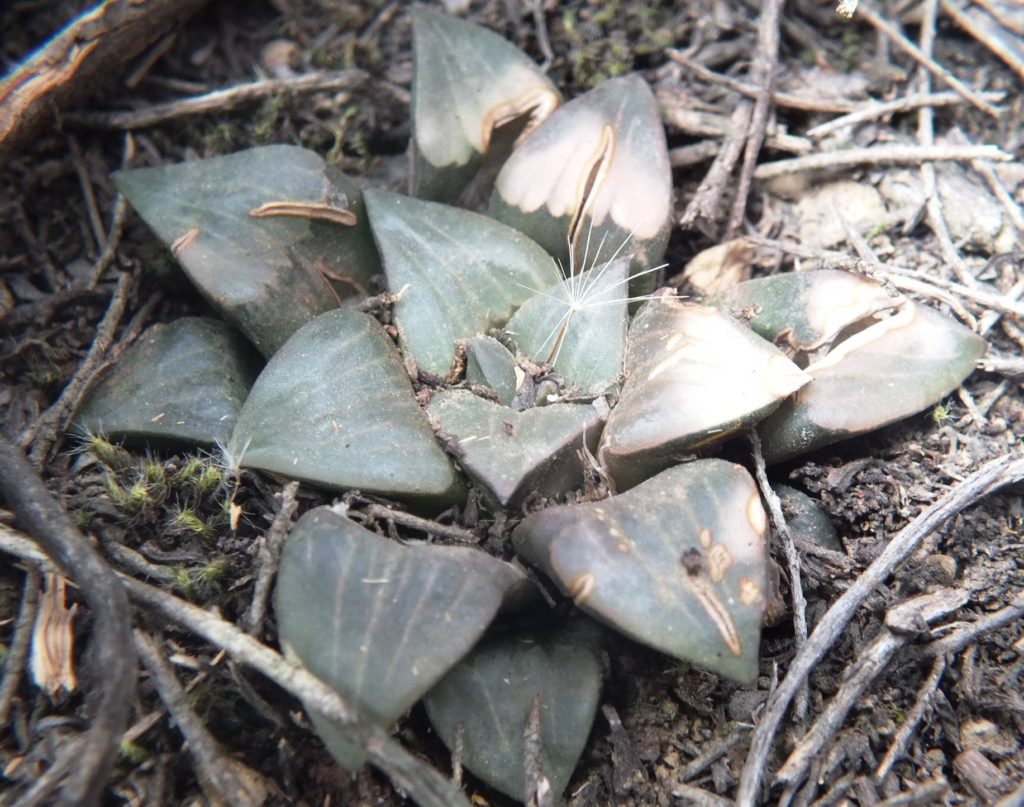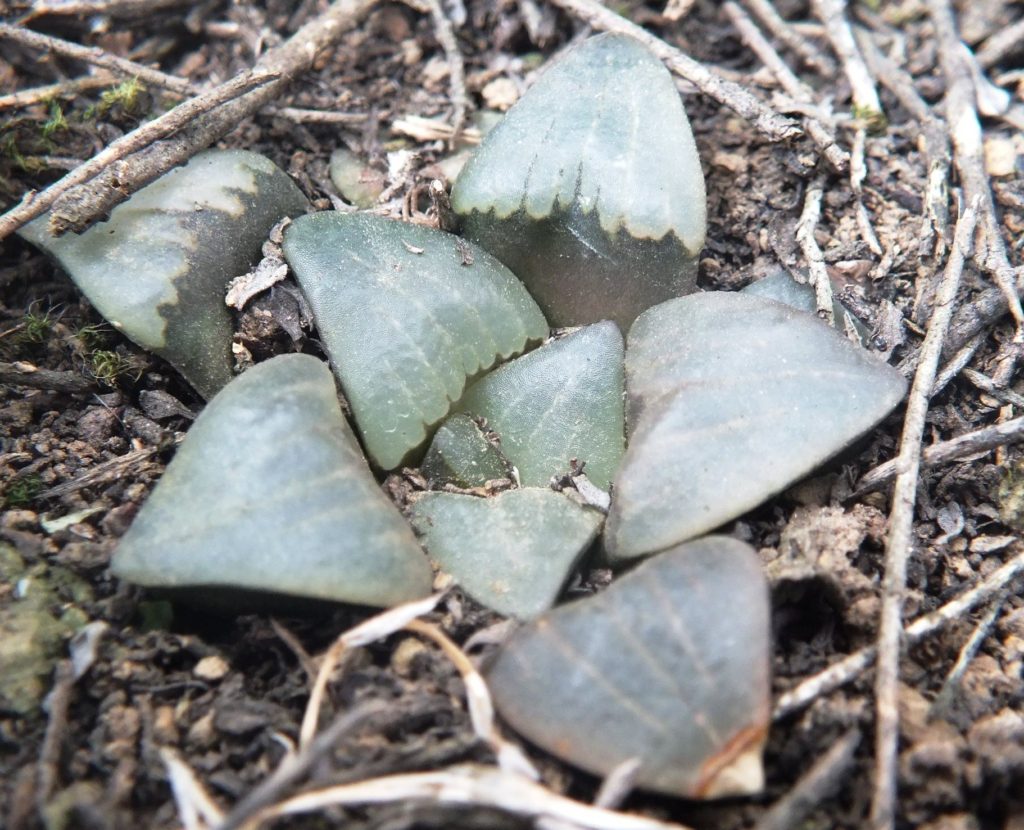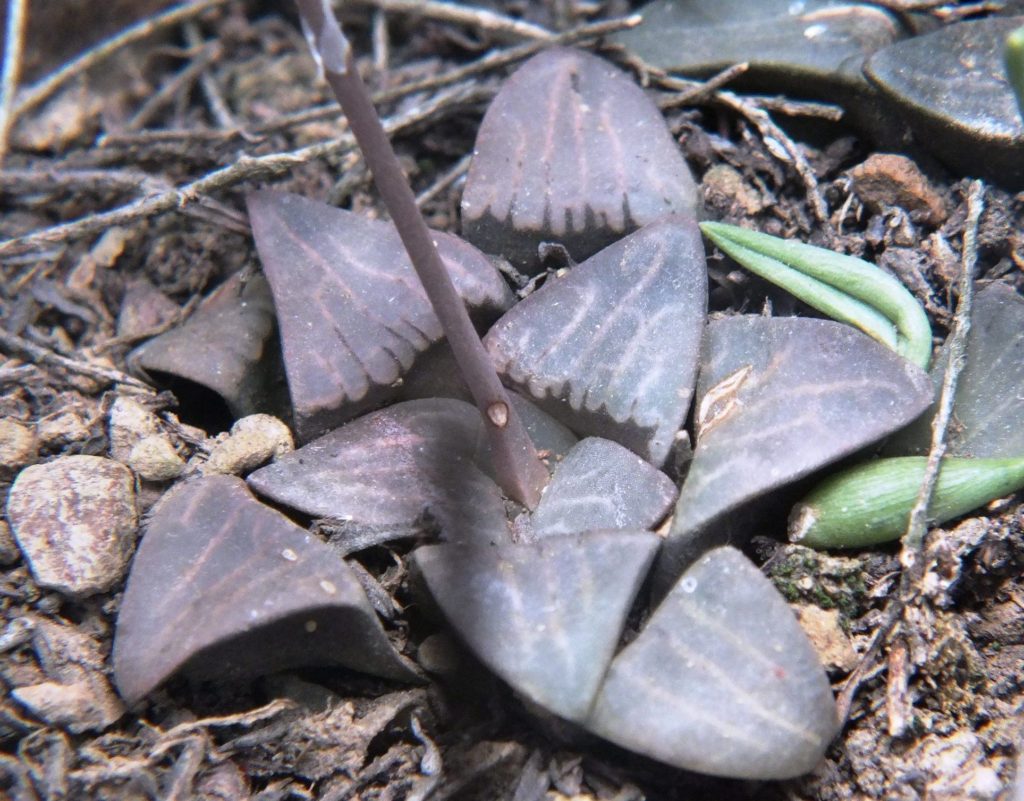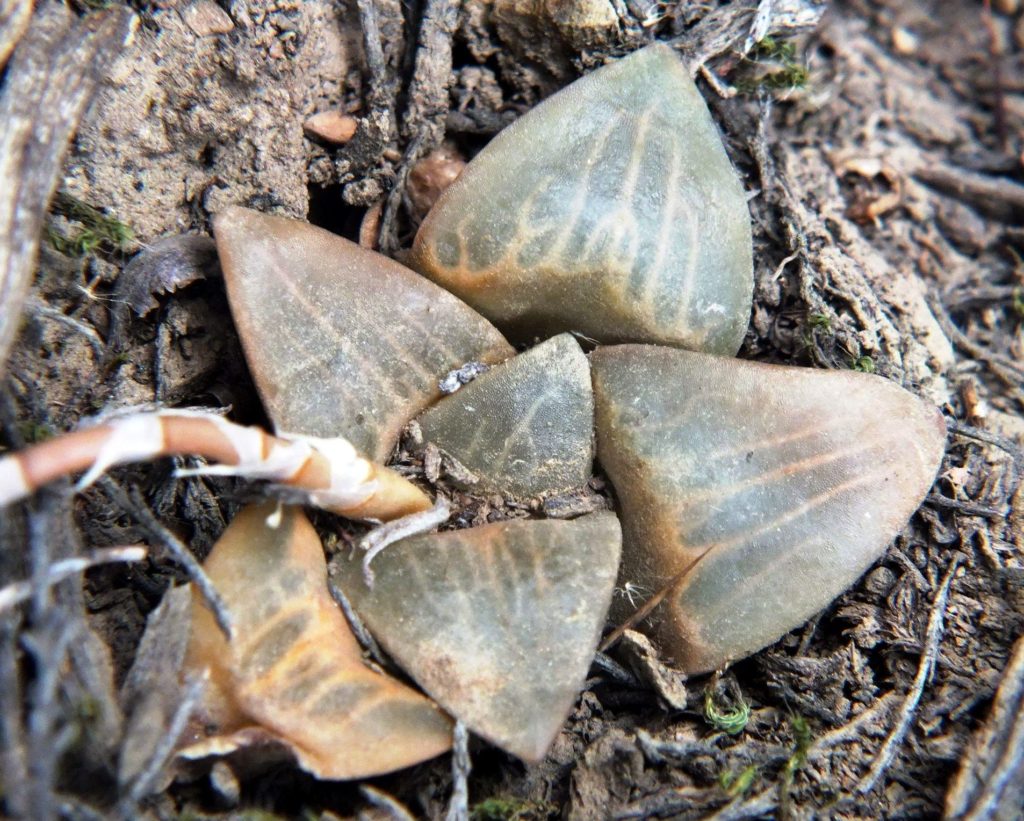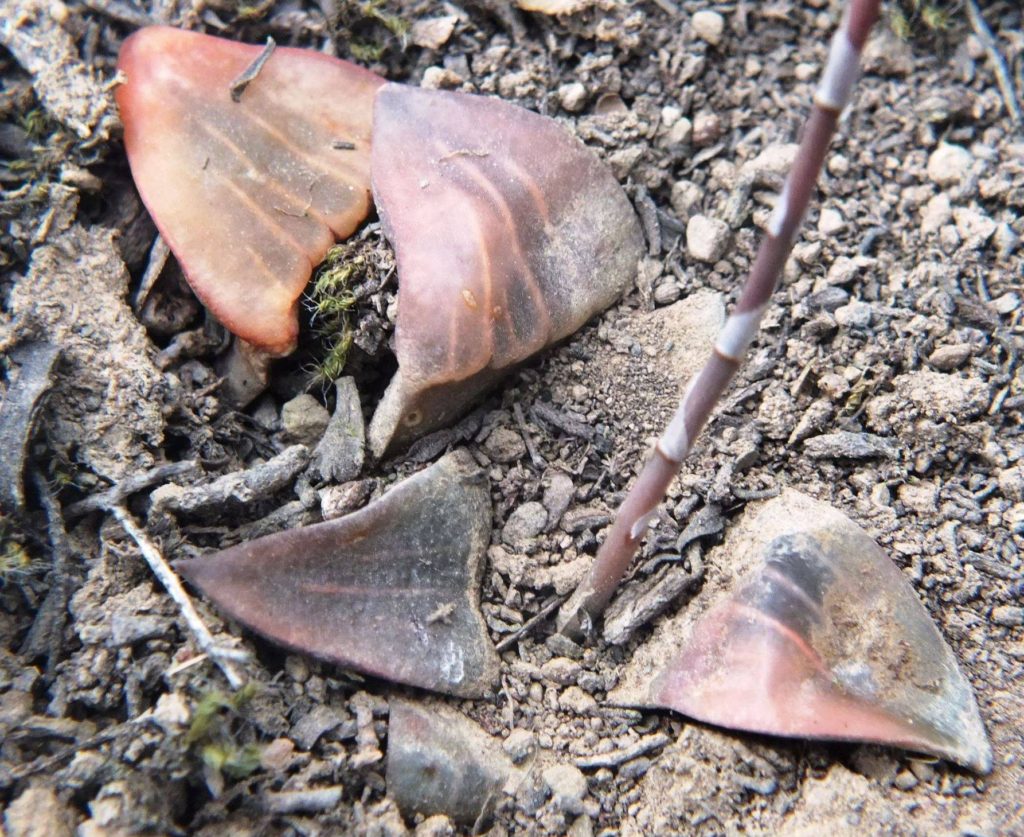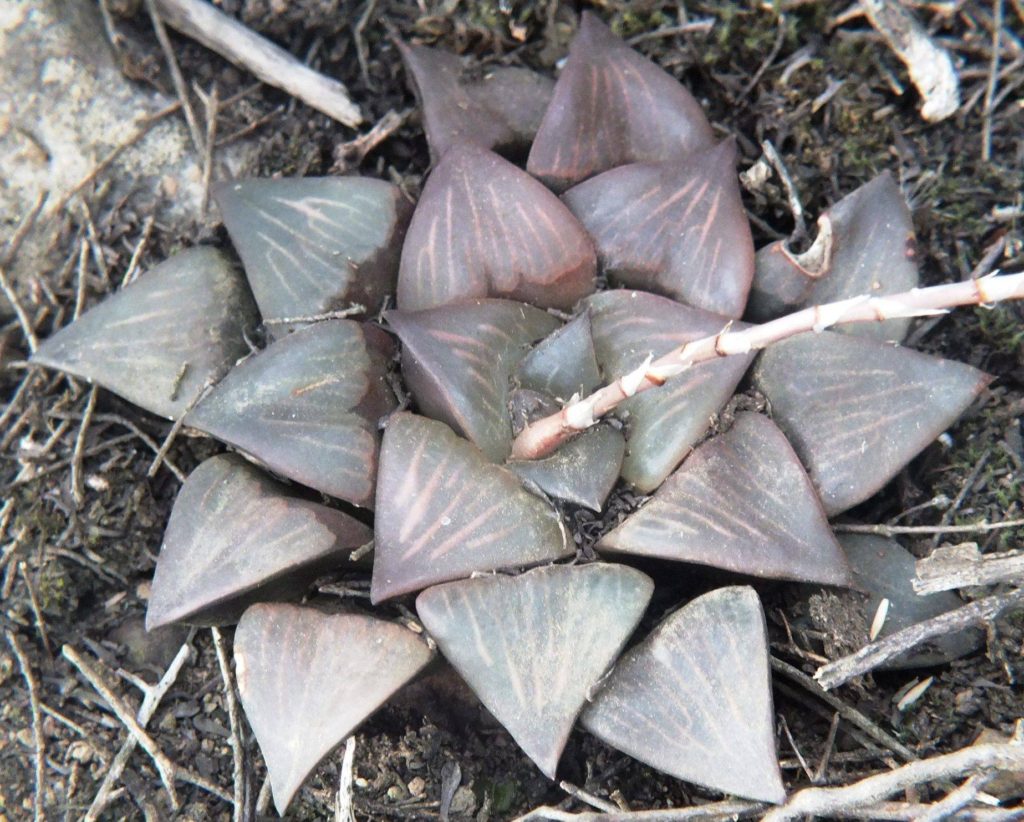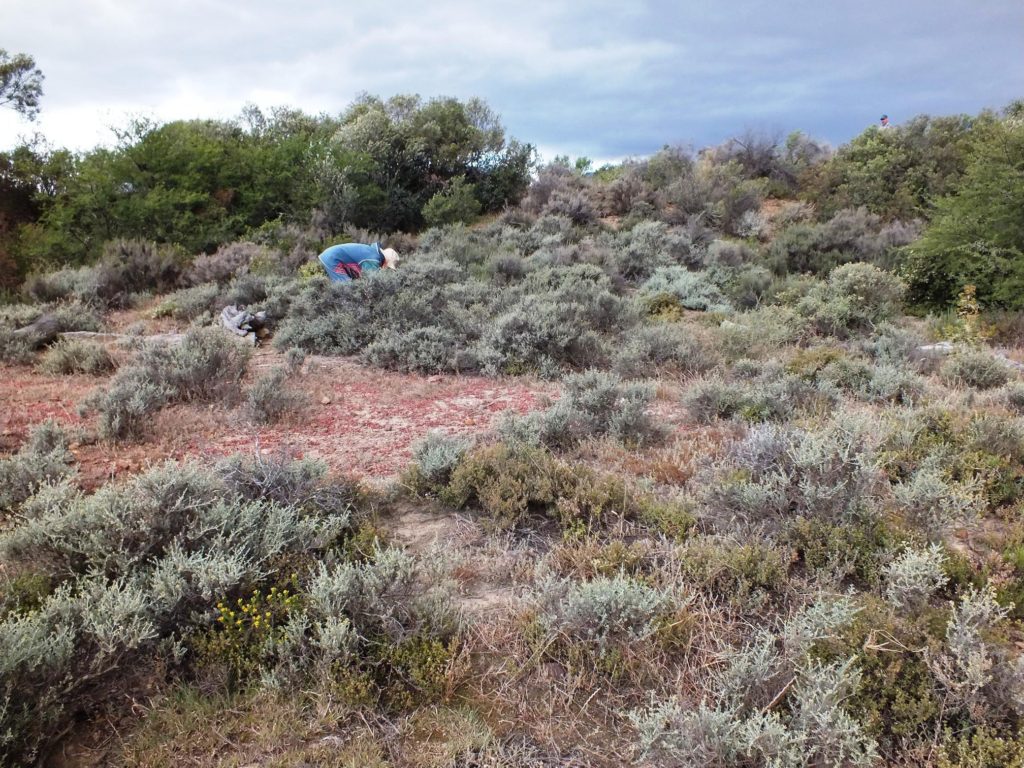59. 2019.7.19 – This is from Sandrift Drew (yr 2011), well into the Robertson Karoo and so the most NW muticoid/retusoid/mirabiloid. A strange place with 3 Tulista species present and two sets of their hybrids. H. mirabilis is also present. But put that mostly in past tense. I was raw to field Haworthia at the time and exploring the amazing relationship between H. herbacea and H. reticulata when they existed as more than 10 different species names. (I shudder to think what the amazing taxonomists and experts of today would have made of that lot without my intervention). I happened to stop at Sandrift and quickly walked a dense patch of renosterbos. Picked aside some foliage and saw a single plant of? H. mutica? It is sacrilege to collect any single plant and I did. It grew into White Widow and a story told elsewhere. The patch of renosterbos is now the site of a centre-point irrigation system. In about 1945 a Mr Meiring employed at a nursery (Hurling and Neil) at Bonnievale, collected and sold 200 plants of H. mutica from Sandrift to Triebner at Windhoek for 1 shilling each. 1 shilling became10 RSA cents and I wonder what the equivalent worth is today. But the plants did survive in the wild until 2017 when change of ownership (again) brought the inevitable new broom and all is now gone. This despite countless visits and contacts with the landowners. I would describe the habitat as some kind of gravel terrace. But geological connections is now Steven Molteno’s domain. Very complex. I have two albums from different times and will post them both by date.
The first picture is White Widow – it developed that milkiness 15 years in to cultivation!
60. 2019.7.20 – These next were taken at Drew one year later, and a great thought comes to mind. There is an exciting, great future for all us kooky taxonomists with no clear idea of “species”. Just imagine all the new species we can describe if we visit the same sites at intervals of, say, 10 to 20 years. The truth is if we were just presented with clones from supposed different sites, we could end up describing several species from each locality without bothering about possible changes with time. I wish I had more evidence from my own experience to substantiate the real truth of this. I have two dramatic examples and evidence for just one. “White Widow” (“mootica“) is also an indicator of what can happen with time?


